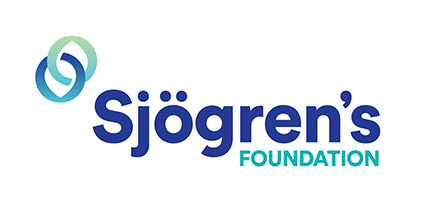

April is Sjögren's Awareness Month
By: Janet Church, President & Chief Executive Officer, Sjögren’s Foundation
Sjögren’s (“SHOW-grins”) is a systemic autoimmune disease that affects the entire body. Along with symptoms of extensive dryness, other serious complications include profound fatigue, chronic pain, major organ involvement, neuropathies, and lymphomas.
Understanding Sjögren’s
As a systemic disease, affecting the entire body, symptoms may remain steady or worsen overtime. There is no one single progression of the disease and this can make it challenging for patients and their physicians. While some people experience mild discomfort, others suffer debilitating symptoms that greatly impair their functioning. Early diagnosis and proper treatments are important as they may prevent serious complications and greatly improve a patient’s quality of life.
About half of the time Sjögren’s occurs alone, and the other half it occurs in the presence of another autoimmune connective tissue disease such as Rheumatoid Arthritis, Lupus, or Scleroderma. In addition, Sjögren’s is often misrepresented as a rare disease; however, it is estimated that there are four million Americans living with this disease, making it one of the most prevalent autoimmune diseases.
Diagnosis
There is no single test that will confirm a diagnosis of Sjögren’s and thus physicians must conduct a series of tests and ask about symptoms the patient is experiencing.
Rheumatologists have primary responsibility for diagnosing and managing Sjögren’s and can conduct a series of tests and ask about symptoms. An eye doctor or oral medicine specialist also might run tests if Sjögren’s is suspected. Physicians will use a number of tests and questions to determine a Sjögren’s diagnosis.
Further research is being conducted to refine the diagnostic criteria for Sjögren’s and to help make diagnosis easier and more accurate. Once diagnosed, the Sjögren’s Foundation recommends patients discuss the Sjögren’s Foundation Clinical Practice Guidelines with their physician to review treatment options.
Treatment
A Sjögren’s patient’s treatment path should be decided on a case-by-case basis after the potential benefits and side-effects are weighed by patients and their health care providers. Since Sjögren’s affects each patient differently, a personalized plan should be developed by a patient and their physician, dentist, eye care provider and other specialists about how to treat their various symptoms.
In some cases, lifestyle changes can help certain symptoms such as fatigue and gastro- intestinal reflux, and over-the-counter products can help alleviate symptoms such as dryness. Sjögren’s patients are often managed with a combination of management strategies, over- the-counter products, and prescription drugs. Most patients will need prescription medications at some point in their disease course to help control their disease and reduce the potential for complications.
A number of different medications are available that can be used to manage symptoms. Currently, no single medication has been conclusively proven to slow the progression of Sjögren’s or treat all aspects of the disease.
Research
The Sjögren’s Foundation strives to foster research that will have the greatest potential impact on Sjögren’s patients. An important way in which the Foundation strives for change is to promote innovative research that will have the greatest impact on the lives of those who have this prevalent and devastating disease. The Foundation is also fully committed to the development of new therapeutics that will treat the entire disease, not just one symptom.
Click here to learn more about Sjögren’s Clinical Trials.
Click here to learn more about Sjögren’s Research.
Visit www.sjogrens.org to learn more about Sjögren’s.
The Sjögren’s Foundation is a member of the National Health Council. For more information on membership, click here.


